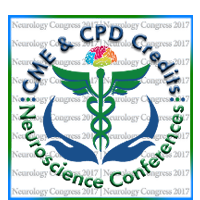
Xi Huang
Nanjing University of Chinese Medicine, China
Title: Shared biology in gut/heart-brain interaction following stress: Commonalities in signal molecules and pharmacology integrated by Gan and Shu-Gan
Biography
Biography: Xi Huang
Abstract
Functional dyspepsia or coronary heart disease and depression(F/C&D) often coexist with high incidence, suggesting unique challenge for human life and available tailored theories from one disease. One of most challenge is weak unified theory without explaining comorbidity of F/C&D (CF/C&D), including: i)molecules in separately and alone mediating mood/brain or circulation/cardiovascular system or digestion/gut in different studies; ii)above molecules without pharmacodynamic integration by one compound-induced simultaneous antidepressants and prokinetic(A&P) pharmacology; iii)Negligence of Gan (≈CF/C&D’s biology) and Shu-Gan (≈CF/ C&D’s therapy and pharmacology) whose actual A&P efficacy have acted for 2200 years. Our previous viewpoints or ideas from abstracts for us attending other conferences only involved in gut and brain or their signal, A&P actions and its integrated shared molecules in regulating gut-brain disorder after stress. The present goal is to elucidate shared biology in gut/heart-brain interaction following stress via providing commonalities in signal molecules, pathway and pharmacology integrated by Gan and Shu-Gan. Results from literature and our recently unpublished researches include: a. No shared biology or unified theory about gut/heart-brain interaction following stress and CF/C&D are available from literature. Gan and Shu-Gan are ancient unified theory or shared biology for simultaneously regulating mood, digestion and circulation in pathophysiology and pharmacology, without widely accepted scientific explanation and strictly designed scientific documents for this theory; b. Brain (hippocampus, CA3 region and neuron et. al.), gut (intestinal epithelium, miR-222, gut microbiome, serotonergic system, tryptophan metabolism, brain-gut-microbiome axis) and cardiovascular system (vulnerable atherosclerotic plaque and chondriosome) are vulnerable to stress; c. High incidences are respectively depressive comorbidity with Functional gastrointestinal disorder (FGIDs) (93%) and coronary heart disease (15~45%); d. one TCM (Traditional Chinese Medicine) is respectively effective; e. We find simultaneous activities against CF/C&D by ferulic acid and meranzin hydrate. Their shared mechanism involved in stress and ghrelin regulation are in progress. Such shared signal molecules and pharmacological compounds will highlight CF/C&D researches.

